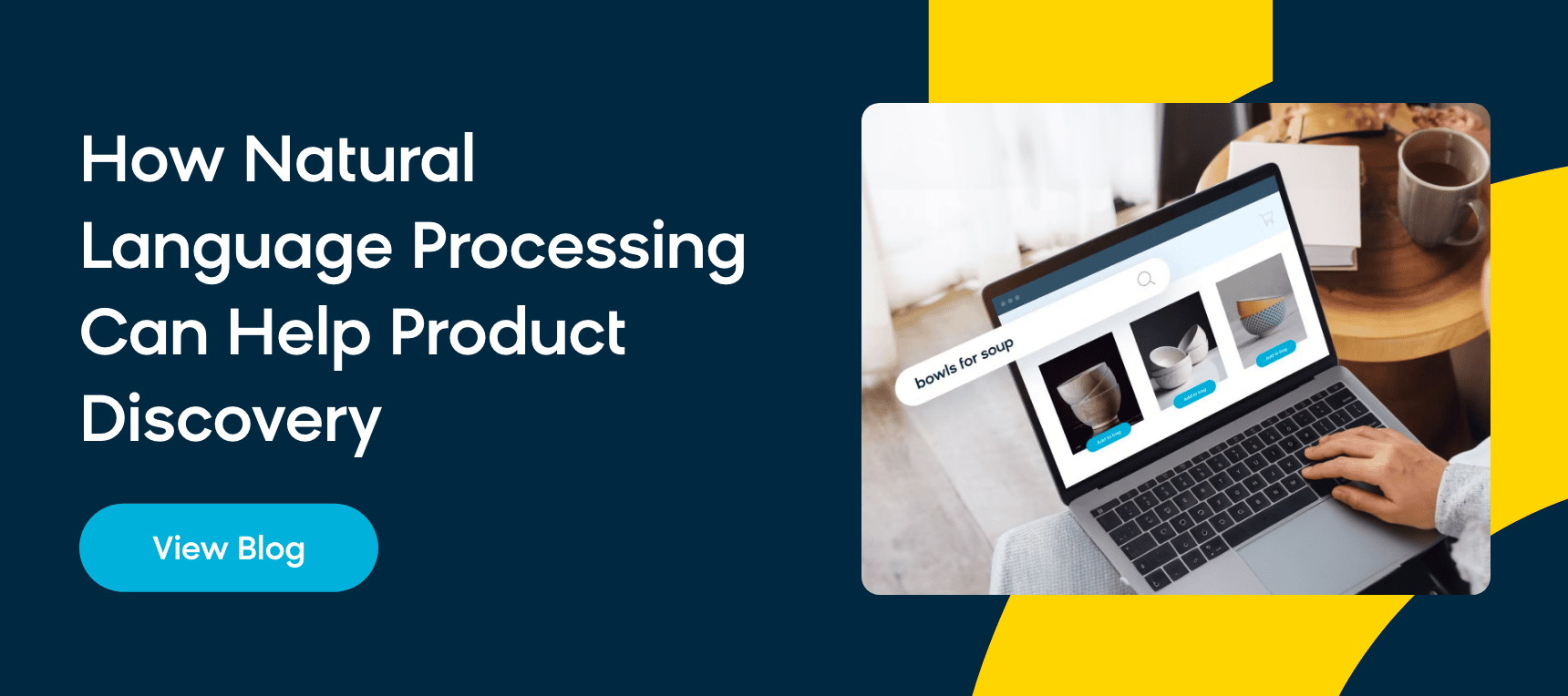Artificial intelligence (AI) is growing at a rapid pace, becoming more accessible to businesses of all sizes and budgets. And with this widespread availability, AI-powered services like chatbots are quickly becoming an expected part of the customer experience.
Today’s shoppers know that large language models and deep-learning algorithms can be harnessed by ecommerce companies to provide them with instant answers to their questions and personalized customer journeys. To make sure your business offers the level of support and care that keeps your customers satisfied, you need an AI-powered chatbot that measures up to modern expectations.
But choosing an AI chatbot isn’t a decision you can make lightly. There are key features that your tool should have, and not all chatbots come with the advanced capabilities necessary to craft a contemporary shopping experience.
Here’s everything you need to know about AI-powered chatbots, including the necessary features, the biggest benefits, and the innovations that will change ecommerce as we know it.
What Is an AI-Powered Chatbot?
An AI-powered chatbot is an advanced version of a chatbot that uses machine learning and natural language processing to understand user queries and provide relevant and accurate responses.
Like traditional chatbots, these programs simulate human interaction through conversational or textual interfaces and are frequently used by businesses to answer simple customer queries.
This offers a huge benefit for companies in the ecommerce landscape. Chatbot technology can stand in as a virtual agent, working around the clock to instantly respond to customer questions, remember user preferences, understand conversations, and much more.
Plus, chatbots can be fine-tuned to meet the specific needs of every individual business, offering useful applications in both B2C and B2B environments. For example, a B2C customer might interact with an AI chatbot when shopping online, asking about product details or delivery times. Meanwhile, a B2B buyer might use an AI chatbot to schedule a meeting or inquire about a specific service.
And as AI progresses in leaps and bounds, chatbots have continuously upgraded — to the point where they are unrecognizable from their predecessors. AI-powered chatbots can now serve as virtual assistants, capable of comprehending text and speech and providing complex responses. They offer personalized interactions that go beyond the basic scripts that older chatbots used to rely on.
How Do AI-Powered Chatbots Work?
On a fundamental level, AI-powered chatbots work by combining AI with large amounts of historical data. This data is analyzed in real time using machine-learning algorithms, which allows the chatbot to fine-tune its responses for a better user experience.
Artificial intelligence needs a large amount of data to offer an interactive dialogue with your customers. On top of the massive datasets that conversational AI requires to understand and respond to real-time dialogue, your AI chatbot needs to know your business, your products, and your customers as well as a human customer service representative would to provide an adequate customer experience.
For instance, if a customer is looking for a product using two different keywords, your AI chatbot needs to recognize the intent behind the search and provide relevant product suggestions. The same goes for a misspelled search term or colloquial language. That’s where natural language processing comes into play — with a large enough data set, an AI chatbot can be trained to recognize patterns in language, and even generate its own human-like responses.
Your AI chatbot also needs to have a comprehensive understanding of your offerings and your customer preferences — for a retail business, it needs to be able to filter products to match a customer’s specific query, showing only “red dresses on sale” if that’s what a shopper is searching for. Or if a travel business trains AI to help users book flights, it needs to take a loyal customer’s previous trips into account, like their previous bookings, their demographics, and so on.
Rule-Based Chatbots vs. AI Chatbots
Up until the recent explosion of AI-powered tools, most people viewed chatbots as simple, unsophisticated programs.
That’s because chatbots were limited to a rule-based system that restricted communication to a set number of predetermined responses. They could only reply to a narrow range of questions, so that was what your conversation was limited to — you had to play by the chatbot’s rules to get any value out of the interaction.
These rule-based chatbots are similar to automated phone menus, guiding users through a series of preset choices to reach default answers. And while there are benefits to these types of chatbots, they can’t go beyond simple interactions.
But now, AI-powered chatbots like ChatGPT and Siri are used daily. This new generation of conversational AI can understand and respond to a variety of user inputs, and these tools are the new normal for modern ecommerce shopping.
Not only do AI-powered chatbots understand what a user is saying, but they can also generate responses beyond what a rule-based system could produce. This is thanks to generative AI, which can create appropriate and relevant responses within a real-time conversation. It can facilitate two-way interactions, surpassing keyword-based responses or interactions dictated by menu options.
Having a conversation that truly grows and deepens with customers as they interact more and more is the crux of conversational AI’s value for ecommerce. Thanks to machine learning, it can learn from a user’s responses to suggestions, incorporate their preferences, and guide their customer journeys with personalized content that speaks directly to their wants and needs.
The Benefits of an AI Chatbot
AI chatbots offer numerous benefits for both customers and businesses:
Chatbots Offer 24/7 Customer Service
One of the best aspects of ecommerce is that shoppers can shop whenever they want. But this poses a customer service issue for online businesses — having a customer service agent or point of contact on call to assist shoppers at all times isn’t ideal.
Thankfully, AI chatbots are available at a moment’s notice, ensuring that customer queries are answered promptly, regardless of the time. These tools can be set up and woven into your shopping experience, prompting any shopper to engage as needed with any questions, comments, or concerns.
The Best AI Chatbots Improve User Experience
With their ability to provide instant, accurate responses, AI chatbots enhance the user experience, leading to increased customer satisfaction.
It’s all about how you integrate your conversational AI chatbot into your customer journey. With access to the right data sets and a helpful, visible presence in your ecommerce experience, AI chatbots can effectively understand a customer’s preferences and provide a highly tailored shopping journey for every customer.
Artificial Intelligence Helps Reduce Business Costs
Customer service is a necessary expense for businesses. But with the use of AI chatbots, companies can save money by automating routine tasks and forgoing the need for 24/7 customer service staff.
Plus, the efficiency these AI tools offer can be a huge bonus. Not only can AI chatbots handle multiple human conversations simultaneously, but they can also process data and provide services like product recommendations just as quickly as a customer service representative can.
Conversational AI Grows Conversions
The ease of use and immediacy of AI chatbots make them great tools for driving conversions. These chat services can engage with customers in a simulated human conversation, helping them with any issues and guiding them to convert without straying from the buying process.
They can also help reduce cart abandonment rates by providing personalized recommendations and assisting with any purchasing questions or concerns.
With an always-available AI chatbot providing customers with immediate answers to their questions, your brand can keep shoppers from pausing their purchasing journey or abandoning their carts. This can result in higher customer satisfaction and ultimately lead to repeat business.
Essential Features of an AI Chatbot
If you’re looking for a chatbot for your business, there are a few crucial factors that you need to keep in mind. Here are the must-have features to look for when adopting a conversational AI platform:
Easy Integration With Your Existing Tech
First and foremost, your chatbot should be able to integrate seamlessly with your existing technology stack.
Making your entire tech stack work in sync is essential for any ecommerce business — that’s why an all-in-one solution is so beneficial. Your AI needs to plug into your current setup and fluently connect with all the vital data that your other systems provide.
Data is the fuel that powers conversational AI, so connecting all the relevant data your AI chatbot needs to fulfill its role — as well as having integration capabilities with tools like customer relationship management (CRM) systems, content management systems (CMS), or other tools that are relevant to your business — is a crucial step in the adoption process.
Simple Setup and Training
Setting up and training your chatbot with data, conditions, and workflows that are unique to your business should be a straightforward process.
While conversational AI is trained on a wealth of data, any chatbot you integrate will require training, both at the start and on a regular basis, to mold it into the right tool for your business. You’ll likely need to teach it industry-specific vocabulary and other information relevant to your business, including new products, services, and policies.
Natural Language Processing
Chatbots that use natural language processing and intent recognition can understand and respond to user inputs accurately. This is a must for any AI-powered conversational AI — it allows for a more human-like conversation and enables the chatbot to respond to complex queries.
Read This Next: How Natural Language Processing Can Help Product Discovery
An Omnichannel Experience
The modern shopping experience happens across multiple channels, with a variety of possible customer journeys. That’s why your chatbot needs to be a useful part of an omnichannel commerce experience.
Different people will take different paths to find your brand. An ad on social media could lead them to a purchase or an SMS campaign could direct a shopper to a personalized landing page. No matter which channels your customer interactions take place in, your AI chatbot needs to be available to help at a moment’s notice.
The best AI chatbots provide a consistent experience across all channels, including the web, on mobile (through apps or SMS), and on social media (through direct messages or Facebook Messenger). Make sure your AI is omnipresent and able to handle customer inquiries on any platform at any time.
Consistent Brand Tone of Voice
Your chatbot should be able to mimic your brand’s tone of voice to provide a consistent brand experience. This includes using brand-specific terminology and embodying the overall personality of your business.
Remember, your AI chatbot is an extension of your brand’s customer service capabilities, so it should reflect your company’s values and image.
Maintaining a consistent tone throughout all customer interactions helps build trust and familiarity with your brand while providing a cohesive experience across all channels.
Real-Time Reporting
One of the biggest advantages of conversational AI chatbots is their ability to learn and grow from each new interaction. Make sure your chatbot can do this, as well as provide real-time analytics and reports to help you understand customer behavior and preferences.
This helps ensure your chatbot and all the other areas of your business are continuously improving and you’re not missing out on any useful data.
The knowledge gleaned from your AI chatbot can help you fine-tune marketing campaigns, paths to purchase, and so much more. With access to information like how many people interact with your chatbot on a given day, what kind of questions they’re asking, and how long the average conversation lasts, you can make changes to improve your customer experience and optimize each step of the buying journey.
Data Compliance
The data your AI chatbot needs to answer questions and help customers on their shopping journeys requires gathering and analyzing their information, which means your business becomes responsible for the privacy and security of that user data.
To make sure your chatbot is ethically and transparently processing this information, you need proper consent management capabilities and policies.
The solution powering your chatbot needs to manage your customers’ consent and track any changes to their consent preferences so their data is safely and securely handled.
With consent management capabilities, your customers can be segmented accordingly to inform your chatbot of which data points it can use to build personalized experiences for each user, ensuring that every interaction is helpful and appreciated.
Personalization
Personalization is the pinnacle of ecommerce — every business should aim to craft a consistent, cross-channel experience that can adapt to customer needs and wants in real time, and artificial intelligence can help make it happen.
AI has the power to offer customers an unprecedented level of personalization. With the ability to understand human language and craft intelligence responses, connect customer data with product data, and communicate across multiple channels, a conversational AI platform can make the ideal customer experience a reality.
The Future of AI-Powered Chatbots
Conversational AI is quickly becoming the most innovative technology in ecommerce, and the transformative aspects of this new tool are only just beginning to elevate the customer experience.
Soon artificial intelligence will play the leading role in the buying journey, and modern businesses need to embrace and leverage AI to stay ahead of the curve.
That’s why you need Bloomreach Clarity, a revolutionary conversational shopping AI built for a new world of ecommerce. Bloomreach Clarity is trained on real-time customer data, your product catalogs, and our 13+ years of data on how customers shop and search, offering every customer the most personalized and relevant experience whenever they interact with your brand.
It goes beyond the current scope of conversational chatbots to serve as a product expert, engaging shoppers in conversations that are authentic and specific to your business. It can help your customers find the exact product they’re looking for, guide shoppers who don’t have a specific product in mind, make personalized recommendations based on every customer’s unique needs and preferences, and much more.
Interested in learning more about Bloomreach Clarity and exploring new ways that conversational AI can revolutionize your business? Sign up for the waitlist to join the conversation.




















